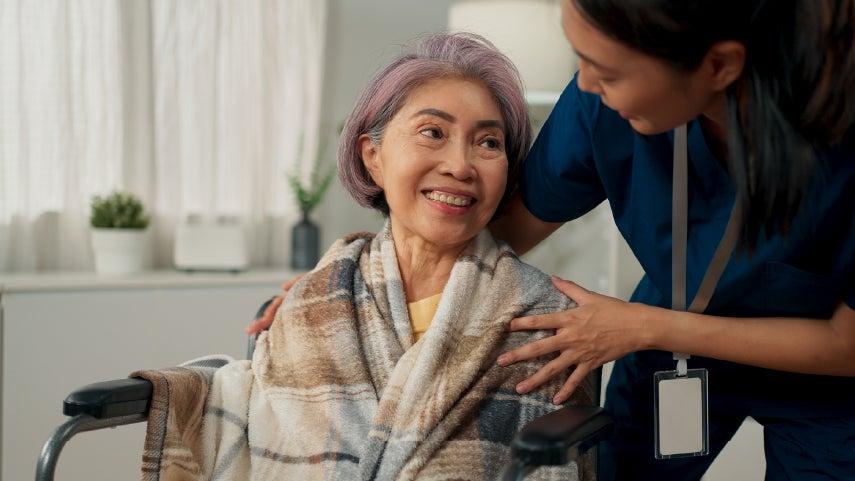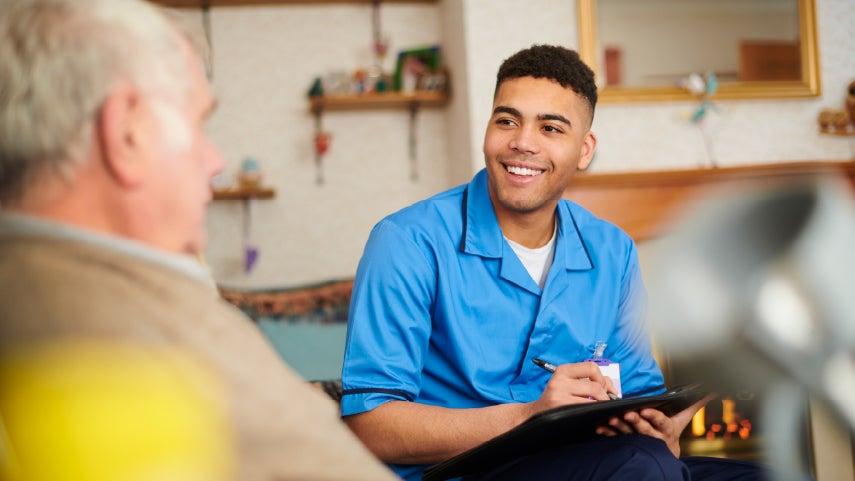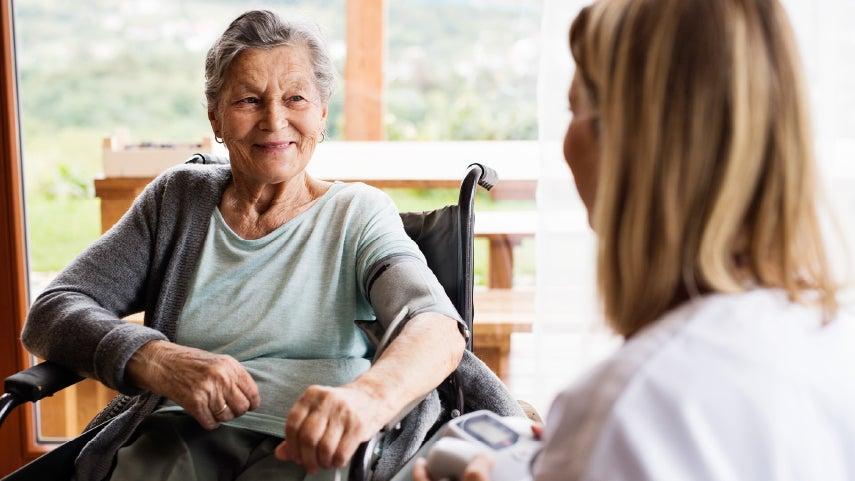How Centering Can Improve Your Connection and Communication as a Caregiver
5 min read

Related Topics
Home caregivers, both professional as well as family members, have been shouldering the care for older adults living with Alzheimer’s disease and related dementias. Even in the best of times, the stress of caregiving can lead to both mental and physical deterioration which can lead to feelings of isolation and loneliness. Studies show that family caregivers in particular are at risk for depression, exhaustion and physical symptoms of stress. Especially during the COVID-19 pandemic, this has led to an increase in stress, depression, burn-out and even cases of PTSD.
Other research shows that there is a significant reduction of stress and increased feelings of competence when home caregivers have integrated a self-care practice into their daily routine and learned basic person-centered communication skills. Relationships improve between the care receiver and care giver when just a few key communication skills are used.
How caregivers can improve person-centered communication skills
The first step in improving connection and communication is actually within yourself. It is impossible to connect with another human being when you are filled with your own thoughts and feelings.
Learning how to quiet yourself, put those thoughts and feelings aside for 10 minutes and find a way to ‘center’ yourself is the most important skill a caregiver can have.
Actually, everyone should have some way of finding their 'center'. There are many ways to do this, meditation, yoga, breathing exercises, tai chi, qigong or whatever works for you. Eventually, having a daily practice that takes only a few minutes, anchors this skill into your daily life and is always there when you need it. Skilled professionals in a variety of methods have created short videos to help you find a way you like (watch our free Caregiver Self-Care video series on YouTube for examples).
We encourage everyone to find what works for them and practice that technique at least once a day. Finding those moments of peace brings healing and reduces the stress of everyday caregiving.
What happens after you've centered yourself
Once you have ‘centered’ you are open to take in the other person, the one you care for. The next step is to observe what you see, hear and feel. While this seems simple, it is often overlooked and it’s critical to communication. Taking the few seconds to observe allows you to see emotions that are being expressed: anger, frustration, sadness, joy, surprise, disgust. Those emotions can be seen in facial expressions, tension in the shoulders, a change in breathing, and the physical posture. Understanding what is going on before entering into a conversation allows you to prepare and choose how to engage.
It’s important to recognize the difference between your needs and those of the other person. You might be concerned with getting your mother to take a bath, for instance, while your mother is concerned about being naked in front of you, falling like she did last time and feeling out of control of her body.
Here’s an example of a dialog that often happens:
Vicki: (walking into the room) Mom, it’s been days since your last bath. You’ve started to smell. The bath is filling so let’s get you into it.
Mom: I do NOT smell. And I just had a bath yesterday. Don’t tell me I smell!
Vicki: Okay, so you don’t smell. Still, you’ve got to take a bath. It’s all ready.
Mom: I am not taking a bath. And that’s that!
Vicki: Mom, come on, we go through this every time. Please, for me.
Mom: I don’t know why you are so obsessed with this bath thing. It’s your problem.
And here is how that conversation could go with just a few simple changes.
Vicki: (walking into the room, centered, observing) Hi Mom. How are you doing?
Mom: Well, not so good this morning. I feel a little shaky.
Vicki: Shaky. Where do you feel shaky.
Mom: In my legs and here. (Pointing to her heart)
Vicki: Do you think you’re missing dad?
Mom: That could be it.
Vicki: Hmm. (with sadness on her face reflecting what she sees on her mother’s face.)
Mom: So what are we doing this morning?
Vicki: I thought I’d draw you a bath so you could relax a bit.
Mom: Is the water hot? Did you put in the Epsom salts?
Vicki: Yes I did and yes, the water’s hot – at least right now it is. Do you want help getting in?
Mom: Oh yes, you know I almost fell last time.
Vicki: I know, I was so scared for you. Why don’t you go into the bathroom and get undressed, then wrap one of those big towels around yourself.
Mom: That sounds fine. I’ll call you when I’m ready.
How tending to the care receiver's needs can create increased feelings of competence
There are many important points to note but the most important is for the caregiver to put aside her goal and first attend to the feelings of her mother. Another important point is to never correct the other person. It’s not really important for mom to remember that it’s been days since her last bath or that she really did fall last time.
Vicki has to realize that her mom’s memory is bad and selective. Mom is not the same as before and that can be painful. It’s difficult realizing that your mother is aging. It triggers lots of feelings of loss. But that can not be part of their interactions.
Caregivers need outlets and ways of expressing their feelings. Good friends, counselors, help lines, Facebook groups, whatever works. Bottling up your feelings won’t do you any good because they will spill out in unexpected ways. You have to take care of yourself so that we can build a just and caring society in which each of us live with dignity, purpose, and security.



